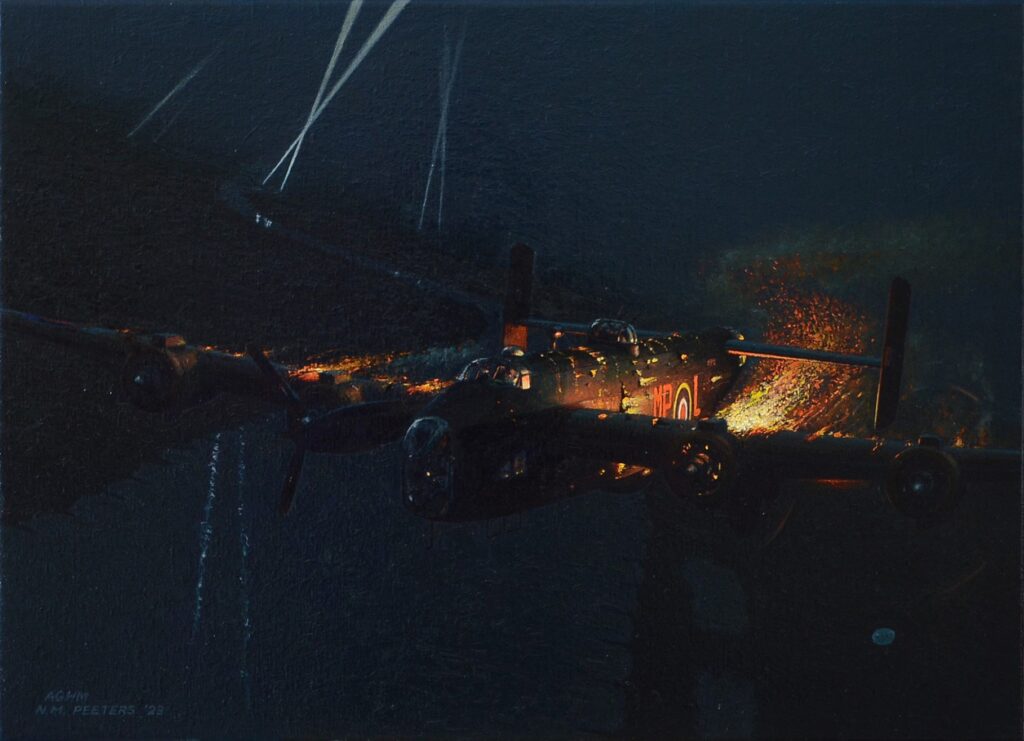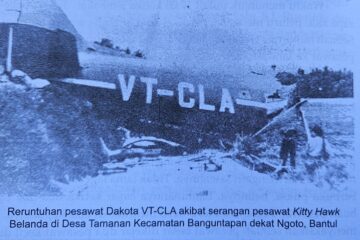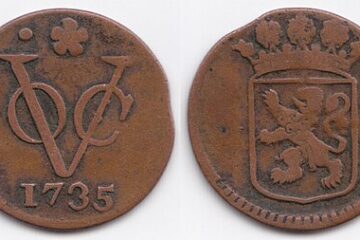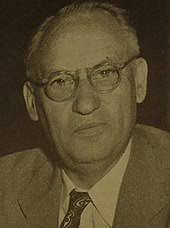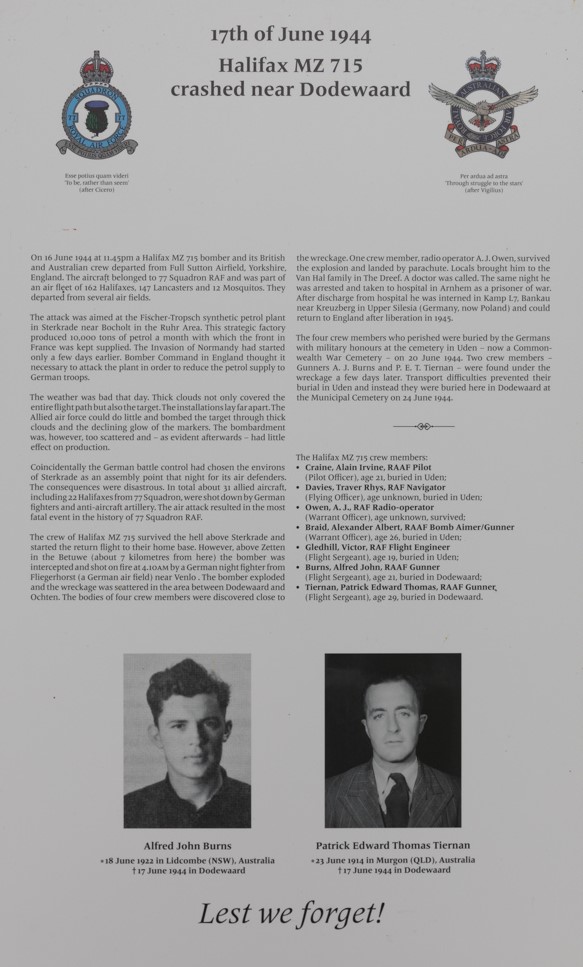
On the night of June 23, 1944, the small town of Dodewaard in the Netherlands became an unwilling witness to the horrors of World War II. A Handley Page Halifax III bomber, serial number MZ 715, was shot down during a mission over occupied Europe. This tragic incident not only marked a devastating loss for the Allied forces but also highlighted the shared sacrifices made by nations far from the European theatre. Among the crew members who perished were young Australians, whose stories deserve to be remembered.
The mission and the crash
The Halifax III MZ 715 was part of a larger bombing operation targeting vital enemy infrastructure. As the aircraft made its perilous journey over occupied territory, it faced heavy anti-aircraft fire and enemy fighter attacks. The plane was ultimately struck, and despite the crew’s heroic efforts to maintain control, it crashed near Dodewaard.
Local witnesses described the sight as terrifying yet awe-inspiring, with the flaming aircraft illuminating the night sky. The crash left a deep impression on the villagers, who later risked their own safety to recover and honour the fallen crew.
The Australian connection
Among the crew of the Halifax were several Australians serving in the Royal Australian Air Force (RAAF), a testament to the international nature of the Allied effort. These young men had traveled from the other side of the world to fight for freedom in a distant land. Their journey, driven by duty and bravery, ended tragically in the fields of Dodewaard.
Their sacrifice exemplifies the global scope of World War II and the interconnectedness of nations in resisting tyranny. The Australian government, families, and communities mourned their loss while taking pride in their courage and commitment.
To provide a precise list of the crew members who died in the Halifax III MZ 715 crash along with their nationalities, I would need to verify historical records and details of the crew. Allow me to search for the information to ensure accuracy.
The crew members who perished in the crash of Halifax III MZ 715 near Dodewaard, Netherlands, on June 17, 1944, were:
| Name | Rank | Service Number | Nationality | Role | Burial Location |
|---|---|---|---|---|---|
| Alexander Albert Braid | Warrant Officer | 408562 | Australian (RAAF) | Uden War Cemetery, Netherlands | |
| Alfred John Burns | Flight Sergeant | 424711 | Australian (RAAF) | Dodewaard General Cemetery, Netherlands | |
| Alan Irvine Crain | Pilot Officer | 415308 | Australian (RAAF) | Pilot | Uden War Cemetery, Netherlands |
| Trevor Rhys Davies | Flying Officer | 146291 | British (RAFVR) | Navigator | Uden War Cemetery, Netherlands |
| Victor Gledhill | Sergeant | 1592716 | British (RAFVR) | Flight Engineer | Uden War Cemetery, Netherlands |
| Patrick Edward Thomas Tiernan | Flight Sergeant | 426711 | Australian (RAAF) | Dodewaard General Cemetery, Netherlands |
Additionally, Warrant Officer Owen, the sole survivor, was thrown clear of the aircraft during the explosion, sustained serious injuries, and was hospitalised for an extended period.
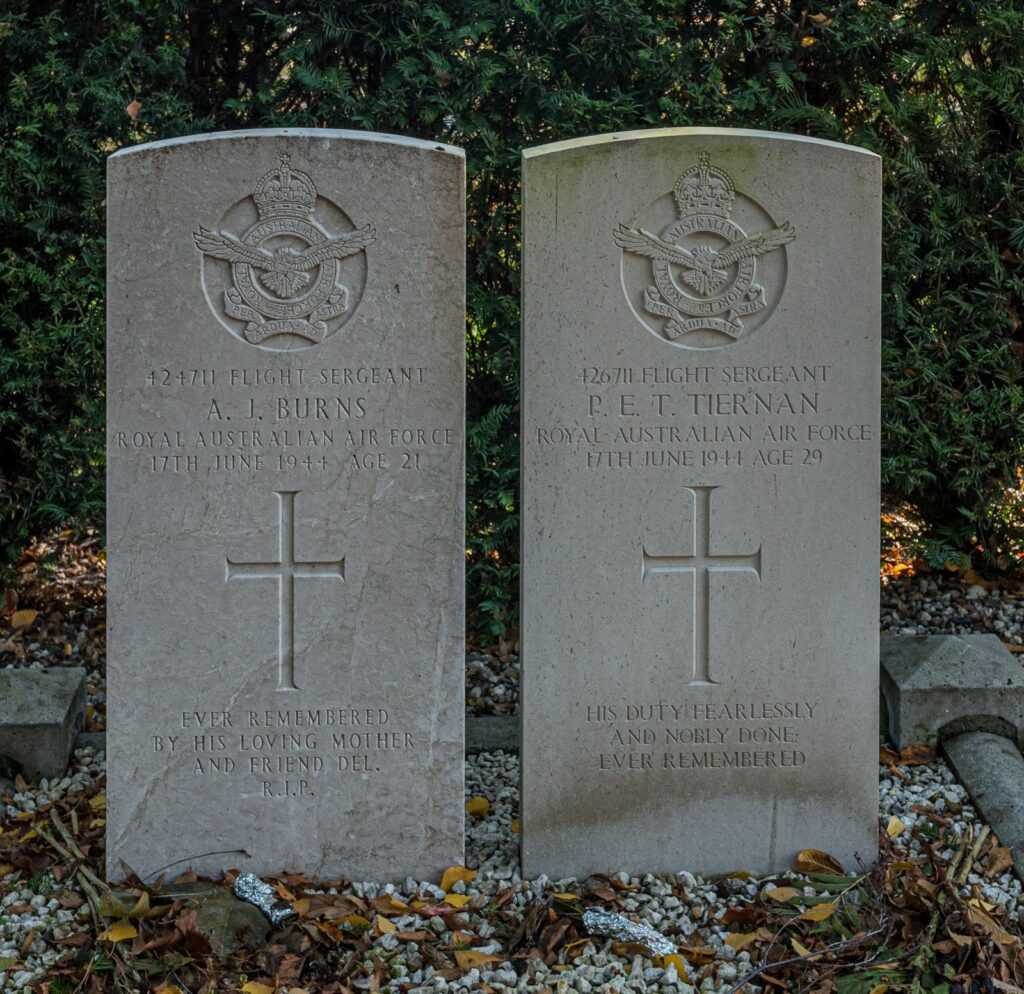
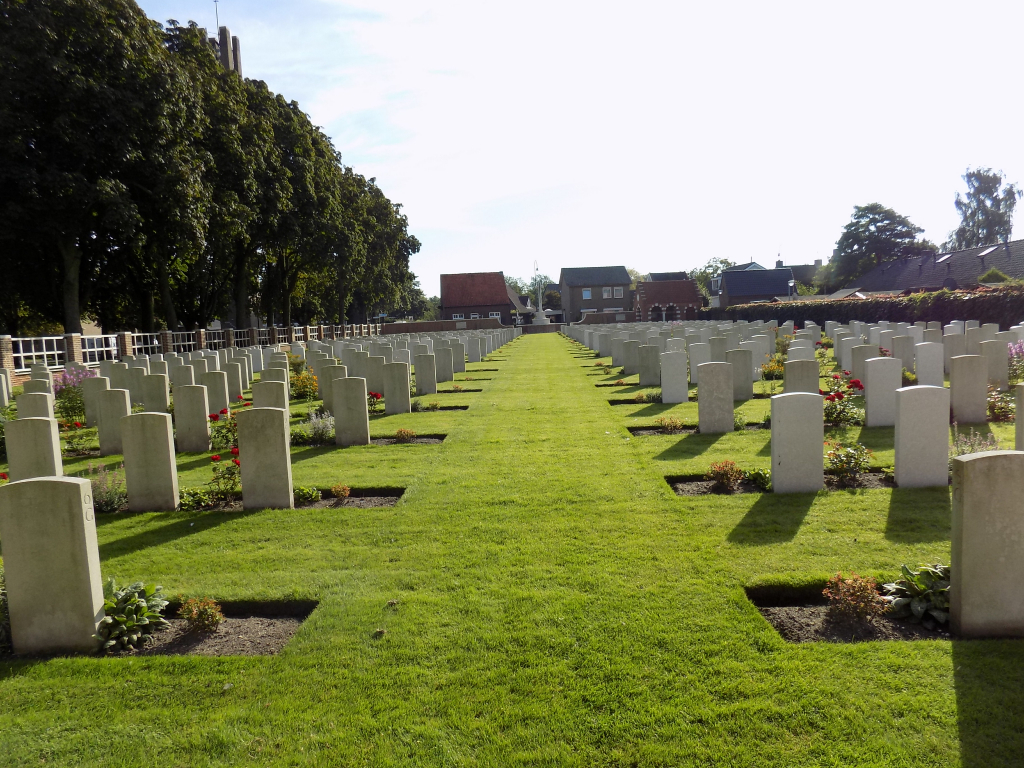
Remembering their sacrifice
Today, the crash site and the memory of Halifax III MZ 715 hold a special place in the hearts of the Dodewaard community. Local historians and organisations have worked to preserve the story, ensuring that the sacrifices of the crew are not forgotten. Memorial plaques and ceremonies honour the fallen, bringing together people from the Netherlands, Australia, and other Allied nations.
For Australians, the story of these crew members is a poignant reminder of their country’s contributions to the global war effort. It underscores the importance of recognising and preserving the history of those who served far from home, often in extreme conditions and at great personal risk.
Conclusion
The crash of Halifax III MZ 715 at Dodewaard is more than a wartime tragedy; it is a story of bravery, sacrifice, and international solidarity. By remembering the Australian crew who perished, we honour not only their individual lives but also the broader ideals for which they fought. Their legacy lives on, inspiring current and future generations to reflect on the enduring cost of freedom.
